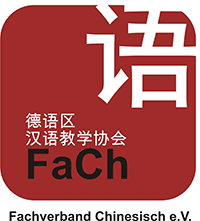Vergleich von Chinesisch-Lernsoftware
Autor/innen
Chinese language learning software requires some special criteria, which do not apply to other languages. In the age of the internet, a good learning program should consider all aspects of the written language (classical, modern, simplified, traditional etc.) and, moreover, be compatible with not only the encoding of the People`s Republic (Guobiao = 6,768 characters), but also with that of Taiwan (Big 5 =13,053) and the Unicode (about 15,000 Chinese glyphs). The latter was originally developed in America but has been gaining more and more acceptance internationally in recent years. Moreover, intonation also requires our attention, since some programs only play words syllable by syllable, i.e. neglect the tone changes involved in sequences of syllables. Even the word seems to be too small a unit for sentence samples to be played correctly. Only a few programs offer whole sentences and display not only the correctly adapted tones but also the correct sentence intonation. Another demand made is that the programs be able to integrate and display unknown texts from the internet or the scanner.
Computers must be seen as a reasonable supplement to current teaching utilities, since they have helped to preserve the Chinese language in this age of giddy paced mass media. The usefulness of programs can only be proved by using them in concrete class room and learning situations. Software programs provide useful utilities for character training (for example the “coreless” character format in TwinBridge Chinese Partner). Some write the characters on the screen and even give etymological explanations, which make it easier to remember the characters. Other programs offer a good phonetical training ((“edutainment”, animated images of the movement of mouth and tongue, frewuency comparison), which is especially recommended as a preparatory course for studentswho have not had the opportunity to learn from a native speaker. While some students may be used to learning with flash cards, some programs offer smart alternatives, e.g. the Chinese Character Tutor, which allows learners to learn the vocabulary either be word classes, lessons, or degree of difficulty. Some programs offer online dictionaries to assist translation work; other recognize Chinese text. For example, Danqing 2.1 professional works with an accuracy of 95% (simplified characters) or 85% (traditional characters), while others teach users to input Chinese characters using various input methods or recognize handwriting and/or voice. And finally there are programs which try to engage all the senses of the student by offering a multimedia explanation of the vocabulary. These techniques really help in the task of memorization (KreaHanzi).
In addition to these programs “e-mail tandem” has become a useful tool to maintain or improve learner`s level of foreign language proficiency. An ideal learning program would react to the student`s individual learning strategies, and to the strengths and weaknesses of his or her learning style. However, this goal seems to be attainable only after further progress will have been made in the research field.

Dieses Werk steht unter der Lizenz Creative Commons Namensnennung - Weitergabe unter gleichen Bedingungen 4.0 International.

Dieses Werk steht unter der Lizenz Creative Commons Namensnennung - Weitergabe unter gleichen Bedingungen 4.0 International.







